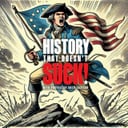
180: “A Race to the Sky”: The Rise of New York City’s Chrysler, Manhattan Company, and Empire State Buildings
“If this is to be a skyscraper… why not make it scrape the sky.” This is the story of the race for the tallest building in New York City—in the world. Erstwhile partners-turned-bitter rivals, architects William Van Alen and Craig Severance are both looking to build the tallest skyscraper in New York City. William is working with automobile titan Walter Chrysler to build his Chrysler Building; Craig is working with George Ohrstrom, a.k.a., the “Boy Wonder” of Wall Street”, to build the Manhattan Company Building at 40 Wall Street. It’s a battle of engineering, wits, zoning, and egos, as each alters their plans with money being no object in the fight to construct the taller (and tallest) skyscraper in the world. But as these two rival teams duke it out, the city’s beloved Waldorf-Astoria Hotel on 5th Avenue is going under. Something new is rising there—something that just might prove a late entry and dark horse winner in this race with… a mooring mast for airships at the top? Yes—the proposed Empire State Building is threatening to blow this race out of the water and change New York City’s skyline forever. ____ Connect with us on HTDSpodcast.com and go deep into episode bibliographies and book recommendations join discussions in our Facebook community get news and discounts from The HTDS Gazette come see a live show get HTDS merch or become an HTDS premium member for bonus episodes and other perks. HTDS is part of Audacy media network. Interested in advertising on the History That Doesn't Suck? Contact Audacyinc.com To learn more about listener data and our privacy practices visit: Learn more about your ad choices. Visit

180: “A Race to the Sky”: The Rise of New York City’s Chrysler, Manhattan Company, and Empire State Buildings
“If this is to be a skyscraper… why not make it scrape the sky.” This is the story of the race for the tallest building in New York City—in the world. Erstwhile partners-turned-bitter rivals, architects William Van Alen and Craig Severance are both looking to build the tallest skyscraper in New York City. William is working with automobile titan Walter Chrysler to build his Chrysler Building; Craig is working with George Ohrstrom, a.k.a., the “Boy Wonder” of Wall Street”, to build the Manhattan Company Building at 40 Wall Street. It’s a battle of engineering, wits, zoning, and egos, as each alters their plans with money being no object in the fight to construct the taller (and tallest) skyscraper in the world. But as these two rival teams duke it out, the city’s beloved Waldorf-Astoria Hotel on 5th Avenue is going under. Something new is rising there—something that just might prove a late entry and dark horse winner in this race with… a mooring mast for airships at the top? Yes—the proposed Empire State Building is threatening to blow this race out of the water and change New York City’s skyline forever. ____ Connect with us on HTDSpodcast.com and go deep into episode bibliographies and book recommendations join discussions in our Facebook community get news and discounts from The HTDS Gazette come see a live show get HTDS merch or become an HTDS premium member for bonus episodes and other perks. HTDS is part of Audacy media network. Interested in advertising on the History That Doesn't Suck? Contact Audacyinc.com To learn more about listener data and our privacy practices visit: Learn more about your ad choices. Visit


















































